Receptor
The site of Patriot Ridge is a private office development for United States government contractors, adjacent to the National Geospatial-Intelligence Agency (NGA) in Springfield, VA.The NGA collects, analyzes, and distributes geospatial intelligence in support of national security. It was formerly known as the National Imagery and Mapping Agency (NIMA).
Adjacent to the National Geospatial Intelligence Agency, Receptor is a site specific landscape sculpture that evokes a satellite dish receiving communications from a satellite orbiting the earth.
Upon approach to the building the viewer must weave through an exterior plaza with a central sculptural focal point. Titled Receptor, this landscape sculpture executed by internationally recognized artist Cliff Garten interprets the NGA’s previous namesake of imaging and mapping to achieve a contemporary park experience.
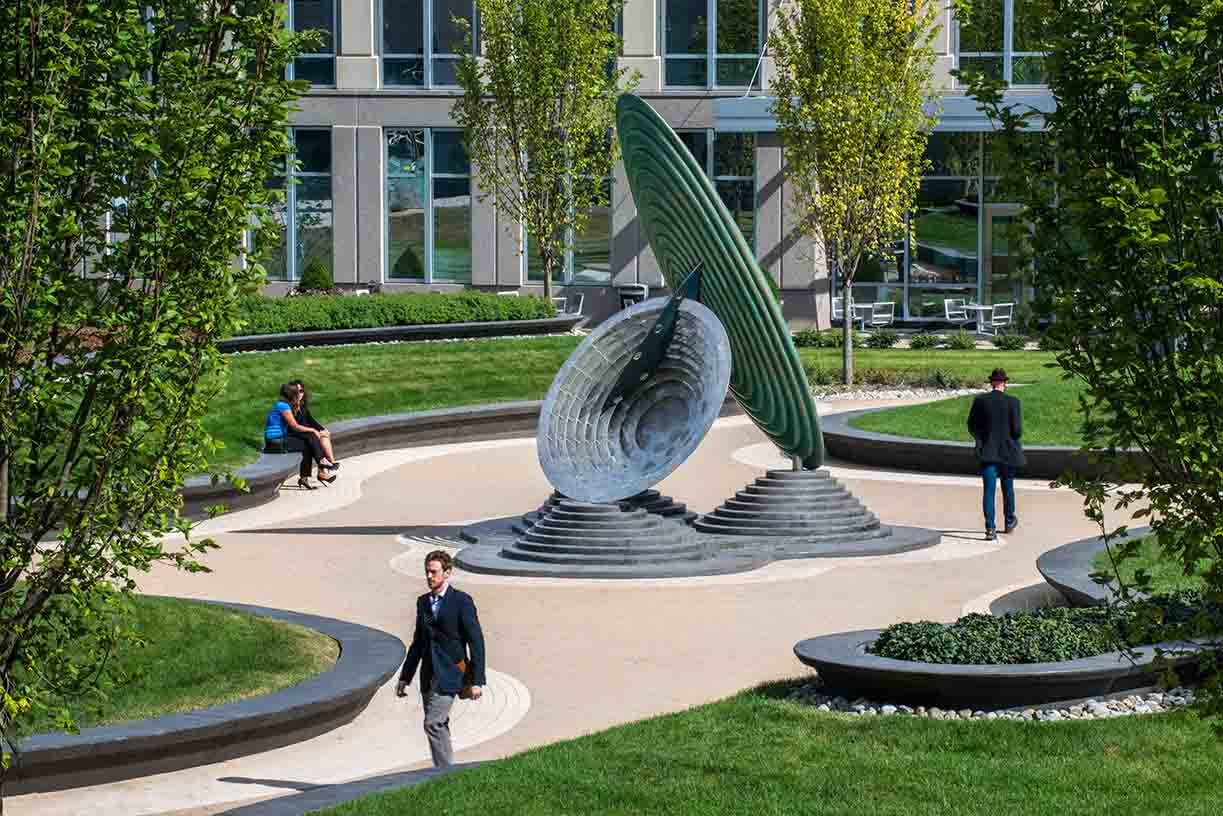
The plaza provides a space for recreation and relaxation for users. Photography: Jeremy Green, © Cliff Garten Studio.
By providing an intimate connective fabric among material, form, function and public perception Garten has always had as one of his central concerns the accommodation of public life. Through the integration of what he calls landscape sculpture Garten’s practice engages in a dialogue with clients to add value and expand the possibilities of infrastructure and the built environment. Whereas a singular sculptural object occupies a specific space, a landscape sculpture becomes a system of parts that are in dialogue to influence and mutually interact. Here, the site design and landscape sculpture of Receptor form a situation that mirrors this process of surveillance.
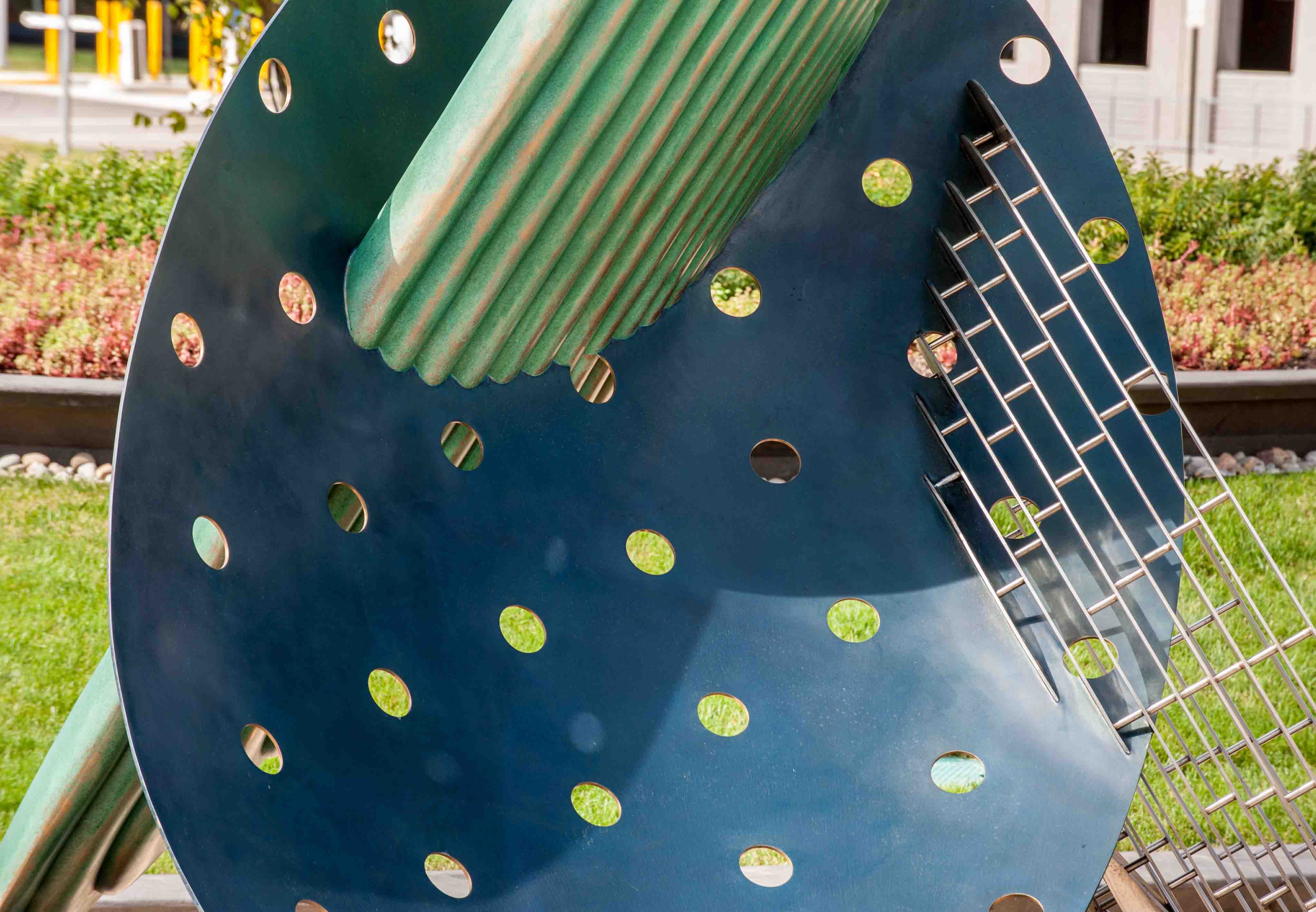
Detail of the intersection of the three dishes that form the sculpture. Photography: Jeremy Green, © Cliff Garten Studio.
Emanating from a panopticonal central point the sculpture is comprised of three elliptical and circular dishes referring to a platform for communication much like a satellite dish receives communications from a satellite orbiting the earth. The three parts, two bronze and one stainless steel, intersect one another to form a triangular composition joining the ground on three concrete topographic stacked forms. Each element is characterized by distinctive textured surfaces made up of solid concentric circles, dotted holes, and circular perforated rings. Once combined each form bleeds and melds visually, confusing the eye, and pushing the viewer to continually move and adjust their viewing perspective around the sculpture.
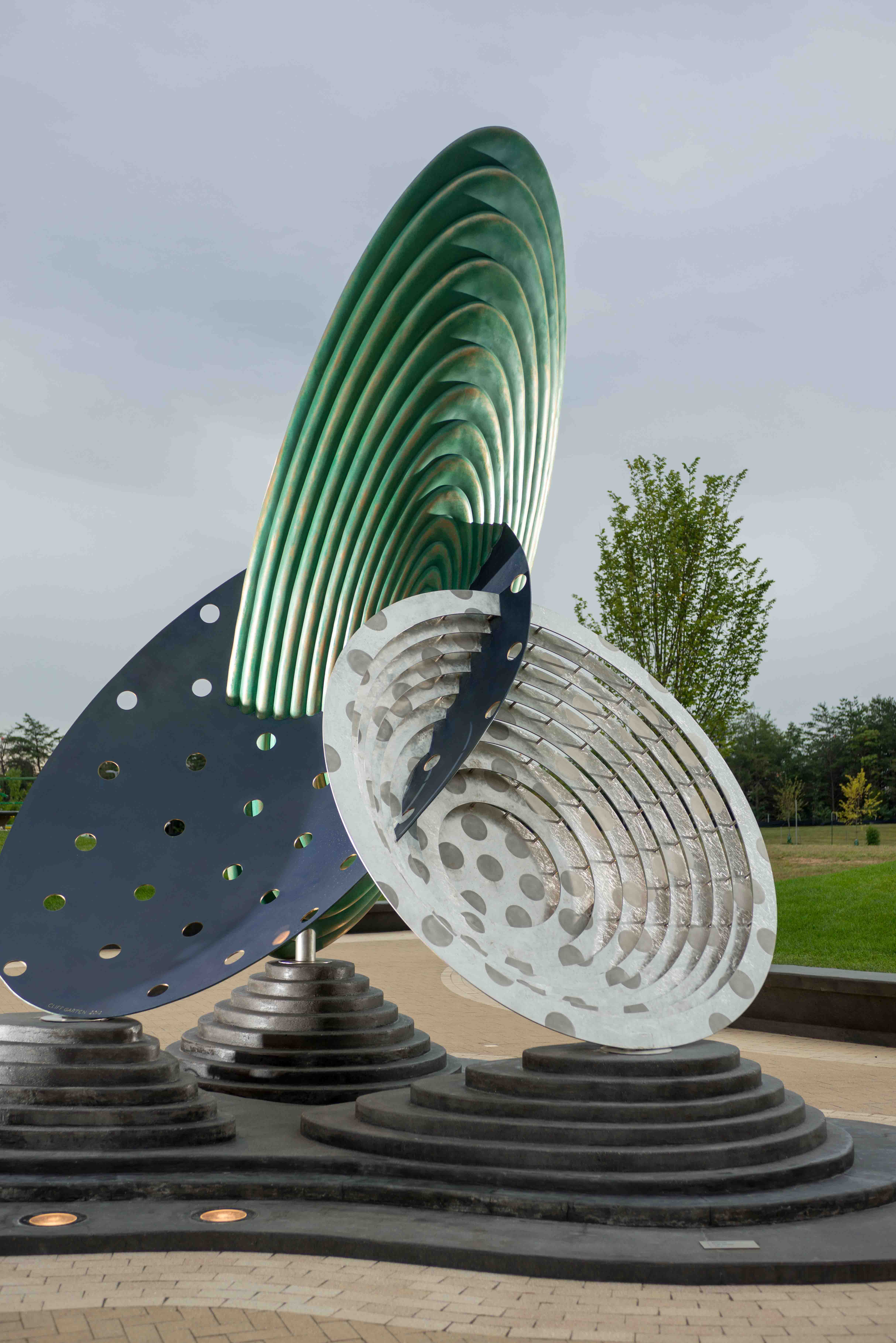
The sculpture is made of bronze and stainless steel, comprised of three elliptical and circular dishes referencing a platform for communication. Photography: Jeremy Green, © Cliff Garten Studio.
Simultaneously both retro and futuristic in style and appearance, the three forms seemingly outmoded physicality dwarfs viewers at 16 feet in height, 20 feet in diameter and approximately 4,500 pounds. The plates intertwined structure emphasizes a strength in intersections and partnering of form and function that suggests the constant evolution of theory and practice f lourishing in our new digital age.
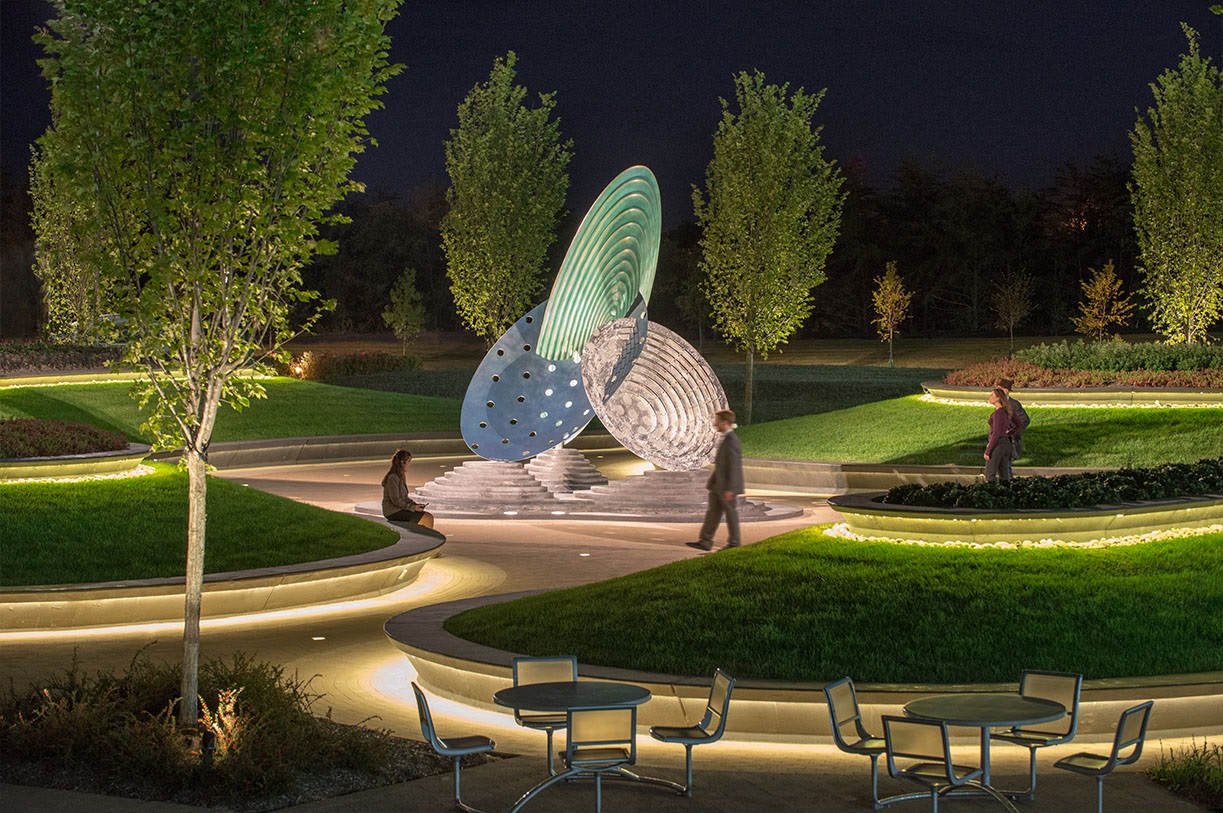
The plaza and the sculpture create an entry for the surrounding office buildings and a place where visitors and employees can rest and socialize. Photography: Jeremy Green, © Cliff Garten Studio.
Four island berms with layers of perimeter concrete seating bands create an enclosure for the sculpture in the central plaza area. Each earthwork’s unique shape forms a linear topography that when viewed from the buildings above refer to aerial cartography practices for documenting land elevation. Similarly, these curved outlines suggest the path of radio waves in the reception of satellite communication from space to the earth. At night these illuminated pathways highlight the form’s interactive potential yet at the same time camouflages the full range of the site. Lights embedded flush in the paving map a footpath through the courtyard to the building entrance like stars illuminating the sky.
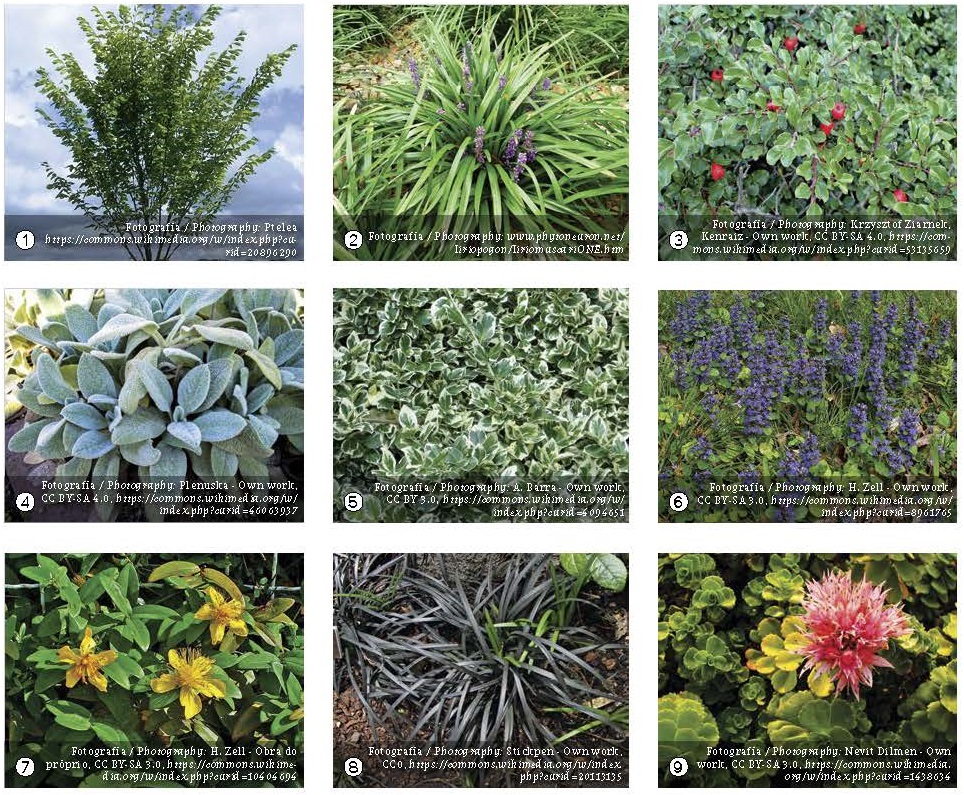
Especies vegetales empleadas en el proyecto.
An elegant tree canopy made up of American Princeton Elms (1. Ulmus americana L. cv Princeton) shade the evergreen ground cover planted around the perimeter with Big Blue Lilyturf (2. Liriope muscari (Decne.) L.H.Bailey), Tom Thumb Cranberry Contoneaster (3. Cotoneaster apiculatus Rehder & E.H.Wilson), lamb’s ear ‘Big Ear’ (4. Stachys byzantina K.Koch), and Fortune’s spindle or wintercreeper var. ‘Coloratus’ (5. Euonymus fortunei (Turcz.) Hand.-Mazz.). Each earthwork is topped with a planting comprised of Carpet Bugle ‘Bronze Beauty’ (6. Ajuga reptans L.), Rose-of-Sharon (7. Hypericum calycinum L.), Black Mondo Grass (8. Ophiopogon planiscapus Nakai cv Nigrens), and Caucasian stonecrop var ‘Fuldaglut’ (9. Sedum spurium M.Bieb.), whose colorful dense blooms paint the landscape to form a lush and welcoming environment for daytime lounging and nighttime star gazing.
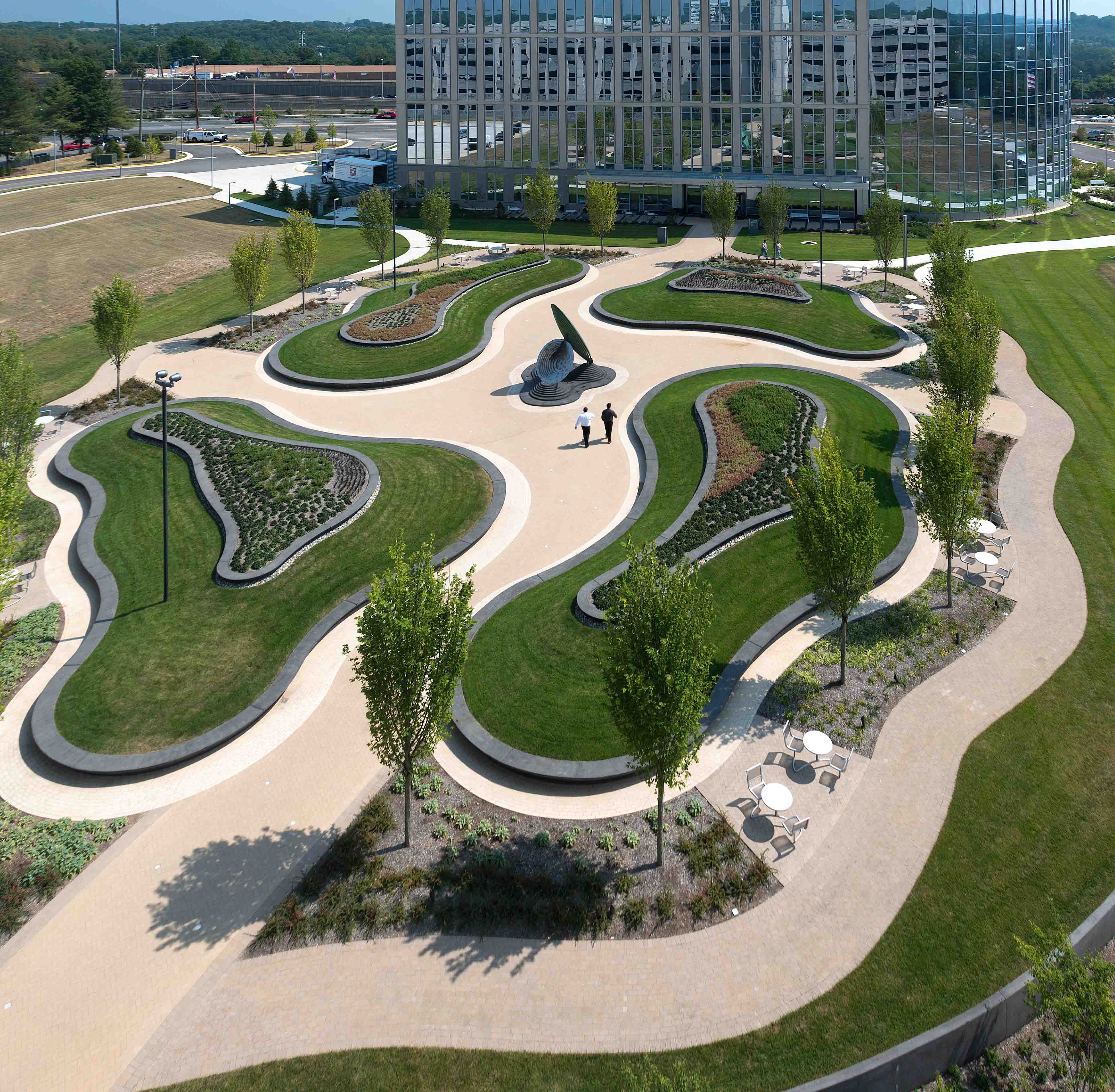
Diurnal aerial view of the site. Photography: Jeremy Green, © Cliff Garten Studio.
In total, the landscape sculpture Receptor creates a conceptual entry portal for the surrounding office buildings that ties the purpose of the agency to a visual statement in order to create a place where visitors and personnel can relax and socialize as well as activating a compelling and dynamic visual perspective to those inside the office buildings viewing the sculpture from above.








